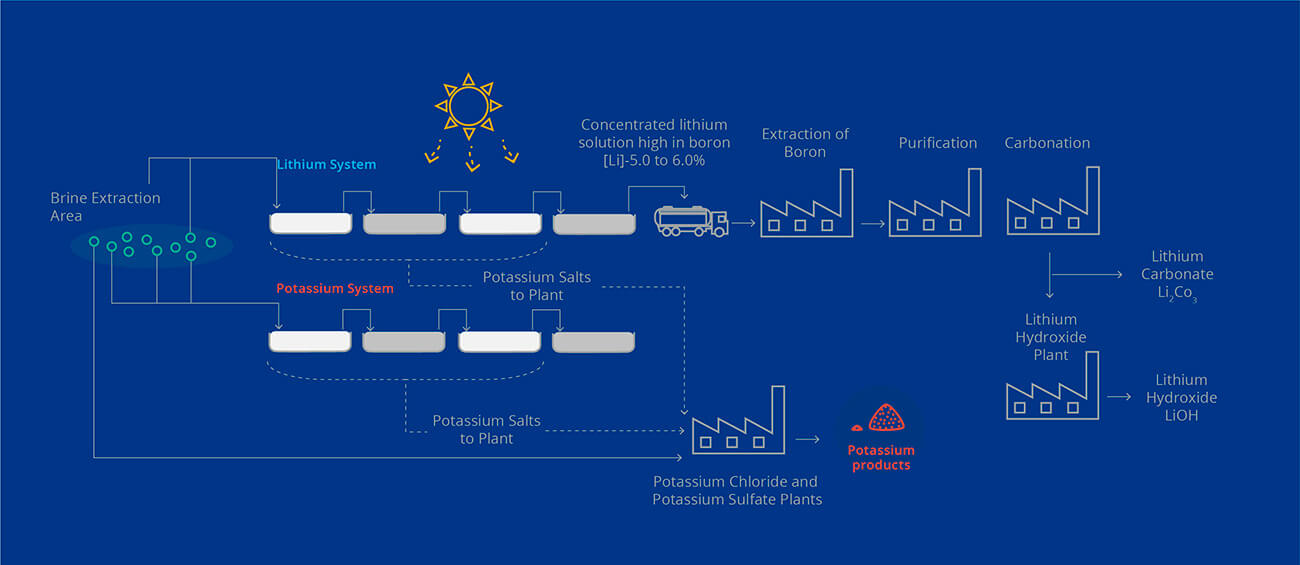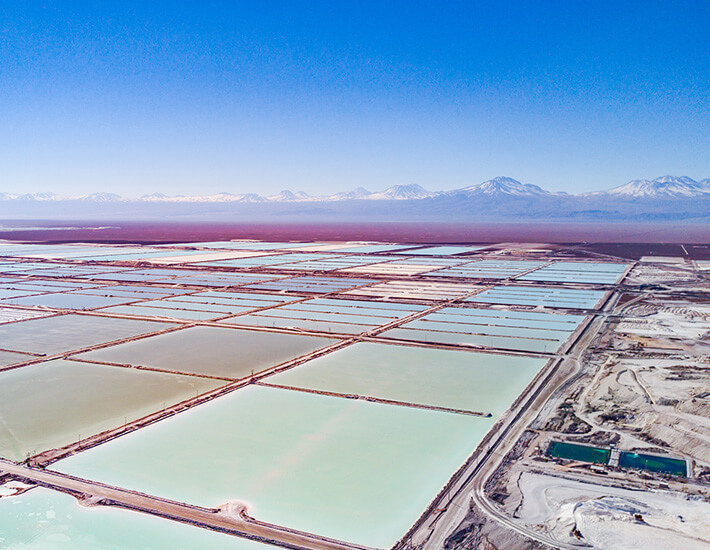Our extraction process in Colorado is respectful of the environment and focuses on the development and sustainable production of lithium. Through the concentration of lithium solutions and deposit by saturation and gravity, without the use of external substances, eliminating most of the other elements and reaching an approximate concentration of 6% lithium, 30 times more concentrated than the extracted brine.
This stage of the process lasts more than a year, and most of the energy used corresponds to solar energy, approximately 95,8%. When lithium reaches the desired concentration, this solution is sent to the chemical plant located in the Salar del Carmen, on the outskirts of the city of Antofagasta, where lithium carbonate and lithium hydroxide are produced.
To find out about the entire lithium extraction and production process at LithPowered, .







